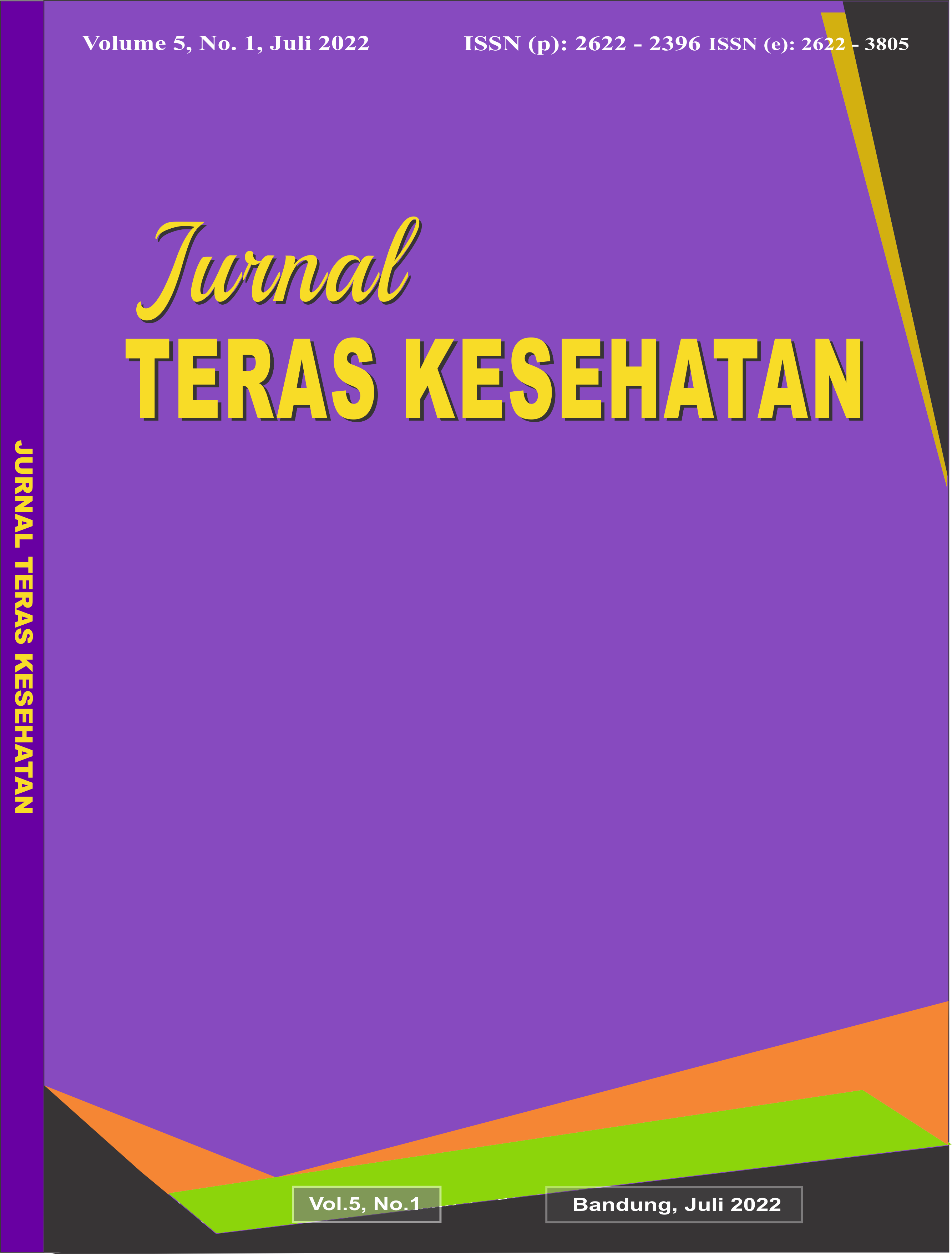KOMUNIKASI KESEHATAN PERILAKU HIDUP SEHAT #JSR DI MEDIA SOSIAL
Health Communication of Healthy Living Behavior #JSR On Social Media
DOI:
https://doi.org/10.38215/jutek.v3i1.44Keywords:
Health Communication, JSR, Social Media, Zaidul AkbarAbstract
Convincing people to have a healthy lifestyle is not easy, so it needs a particular approach, such as health communication. The study aims to examine health communication #JSR healthy lifestyle conducted by Dr. Zaidul Akbar through social media. The research method used in the study is descriptive qualitative, which is more focused on 'what' rather than 'how' and 'why' something happens. Data were obtained from interviews with #JSR users who actively listened, followed, and subscribed to studies of Dr. Zaidul Akbar on social media and observation on the official social media Dr. Zaidul Akbar, like the @zaidulakbar Instagram account, Dr. YouTube channel. Zaidul Akbar Official and Facebook @officialdrzaidulakbar. The results suggest that the source of healthy lifestyle #JSR is dr. Zaidul Akbar. Second, the message designed to grab audience attention with the picture attached, clear and relevant, provide benefit and risk information, arouse emotional and rational, consistent and transparent, and contain a call to action. Third, the media used are social media platforms, YouTube, Instagram, and Facebook, as social media with the four highest ranks that are most widely used by Indonesians. Fourth, effects on message recipients in the form of cognitive, affective, and behavioral effects.
Downloads
References
Anand, S., Gupta, M., & Kwatra, S. (2013). Social Media and Effective Health Communication. International Journal of Social Science & Interdisciplinary Research, 2(8), 39–46.
Ardianto, E., Komala, L., & Karlinah, S. (2014). Komunikasi Massa. Bandung: Simbiosa Rekatama Media.
Bowen, S. A., & Li, J.-Y. (2018). Communication Ethics for Risk, Crises, and Public Health Contexts. In H. D. O’Hair, H. Chapman, & M. Sizemore (Eds.), Risk and Health Communication In An Evolving Media Environment (pp. 227–248). New York: Routledge.
Burke, N. J., & Barker, J. C. (2014). Health Communication ‘noise’ Insights From Medical Anthropology. In H. E. Hamilton & W. S. Chou (Eds.), The Routledge Handbook of Language and Health Communication (pp. 15–28). New York: Routledge.
Bylund, C. L., & Peterson, E. B. (2014). The Contribution of Provider–Patient Communication to Health Disparities. In H. E. Hamilton & W. S. Chou (Eds.), The Routledge Handbook of Language and Health Communication (pp. 586–599). New York: Routledge.
Cokroadhisuryani, H. (2018). Analisis Pelaksanaan Gerakan Masyarakat Hidup Sehat (Germas) Di Wilayah Kerja Puskesmas Ngaglik I [Universitas Islam Indonesia]. https://dspace.uii.ac.id/handle/123456789/6730
Corcoran, N. (2007). Communicating Health: Strategies for Health Promotion. London: Sage Publication.
Crosswell, L., Porter, L., & Sanders, M. (2018). Out of Sight, Out of Mind?: Addressing Unconscious Brand Awareness in Healthcare Communication. In H. D. O’Hair, H. Chapman, & M. Sizemore (Eds.), Risk and Health Communication in an Evolving Media Environment (pp. 55–77). New York: Routledge.
Degutis, L. C., & Babcock-Dunning, L. (2011). Risk Communication and Media Relations. In M. J. Reilly & D. S. Markenson. (Eds.), Health Care Emergency Management: Principles and Practice (pp. 233–270). USA: Jones & Bartlett Learning. https://doi.org/10.1001/jama.2010.1982
Dwi, B. P. (2018). Pengetahuan Masyarakat Tentang Germas (Gerakan Masyarakat Hidup Sehat) di Dusun Ngroto RW 01 Desa Pendem Kecamatan Ngariboyo Kabupaten Magetan [Universitas Muhamadiayah Ponorogo]. http://eprints.umpo.ac.id/4537/
Edgar, T., & Volkman, J. E. (2012). Using Communication Theory for Health Promotion: Practical Guidance on Message Design and Strategy. Health Promotion Practice, 13(5), 587–590. https://doi.org/10.1177/1524839912450879
Effendy, O. U. (2017). Ilmu Komunikasi Teori dan Praktek. Bandung: Remaja Rosdakarya.
Gall, M., Gall, J., & Borg, R. (2007). Educational Research: An Introduction (8th ed.). NY: Pearson Education.
Godinho, C. A., Alvarez, M. J., Lima, M. L., & Schwarzer, R. (2015). Health Messages to Promote Fruit and Vegetable Consumption at Different Stages: A match-Mismatch Design. Psychology and Health, 30(12), 1410–1432. https://doi.org/10.1080/08870446.2015.1054827
Gough, A., Hunter, R. F., Ajao, O., Jurek, A., McKeown, G., Hong, J., Barrett, E., Ferguson, M., McElwee, G., McCarthy, M., & Kee, F. (2017). Tweet for Behavior Change: Using Social Media for the Dissemination of Public Health Messages. JMIR Public Health and Surveillance, 3(1), e14. https://doi.org/10.2196/publichealth.6313
Griffiths, F., Dobermann, T., Cave, J. A. K., Thorogood, M., Johnson, S., Salamatian, K., Gomez Olive, F. X., & Goudge, J. (2015). The Impact of Online Social Networks on Health and Health Systems: A Scoping Review and Case Studies. Policy and Internet, 7(4), 473–496. https://doi.org/10.1002/poi3.97
Guo, Y., & Bian, J. (2019). Social Media-Based Health Interventions: Where AreWe Now? In J. Bian, Y. Guo, Z. He, & X. Hu (Eds.), Social Web and Health Research: Benefits, Limitations, and Best Practices (pp. 15–30). Switzerland: Springer.
Harrington, N. G. (2015). Introduction to the Special Issue: Message Design in Health Communication Research. Health Communication, 30(2), 103–105. https://doi.org/10.1080/10410236.2014.974133
Haslam, K., Doucette, H., Hachey, S., MacCallum, T., Zwicker, D., Smith-Brilliant, M., & Gilbert, R. (2019). YouTube Videos as Health Decision Aids for the Public: An Integrative Review. Canadian Journal of Dental Hygiene, 53(1), 53–66.
Huo, J., & Turner, K. (2019). Social Media in Health Communication. In J. Bian, Y. Guo, Z. He, & X. Hu (Eds.), Social Web and Health Research: Benefits, Limitations, and Best Practices (pp. 53–82). Switzerland: Springer.
Kauppi, S. (2015). Behavior Change and Communication: A Descriptive Literature Review of Behavior Change and Communication in Sub-Saharan Countries [Diaconia University of Applied Sciences]. https://www.theseus.fi/bitstream/handle/10024/102402/Kauppi_Susanna.pdf.pdf?sequence=1
Kemp, S. (2020). Digital 2020: Indonesia — DataReportal – Global Digital Insights. We Are Social. https://datareportal.com/reports/digital-2020-indonesia
Kim, J. W. (2018). They Liked and Shared: Effects of Social Media Virality Metrics on Perceptions of Message Influence and Behavioral Intentions. Computers in Human Behavior, 84, 153–161. https://doi.org/10.1016/j.chb.2018.01.030
Lan, Y. L., & Yan, Y. H. (2017). The Impact of Trust, Interaction, and Empathy in Doctor-Patient Relationship on Patient Satisfaction. Journal of Nursing and Health Studies, 02(02). https://doi.org/10.21767/2574-2825.100015
Laranjo, L. (2016). Social Media and Health Behavior Change. In Shabbir Syed-Abdul, E. Gabarron, & A. Y. S. Lau (Eds.), Participatory Health Through Social Media (pp. 83–111). UK: Academic Press.
Liliweri, A. (2013). Dasar-Dasar Komunikasi Kesehatan. Yogyakarta: Pustaka Pelajar.
Madathil, K. C., Rivera-Rodriguez, A. J., Greenstein, J. S., & Gramopadhye, A. K. (2015). Healthcare Information on YouTube: A systematic Review. Health Informatics Journal, 21(3), 173–194. https://doi.org/10.1177/1460458213512220
Millar, M. (2005). The Effects of Perceived Stress on Reactions to Messages Designed to Increase Health Behaviors. Journal of Behavioral Medicine, 28(5), 425–432. https://doi.org/10.1007/s10865-005-9009-4
Mitu, B. (2016). Health in the Digital Era: Searching Health Information Online. In V. Marinescu & B. Mitu (Eds.), The Power of the Media in Health Communication (pp. 145–156). New York: Routledge. https://doi.org/10.4324/9781315554068
Nabi, R. L. (2015). Emotional Flow in Persuasive Health Messages Emotional Flow in Persuasive Health Messages. Health Communication, 30(2), 114–124. https://doi.org/10.1080/10410236.2014.974129
Parvanta, C. F., & Bass, S. B. (2020). Health Communication: Strategies and Skills for a New Era. Burlington MA: Jones & Bartlett Learning.
Passalacqua, S. (2014). Book Review. Journal Health Communication, 29, 318–320. https://doi.org/10.1080/10410236.2012.753674
Prawira W, R. Y., & Maulida, H. (2020). Kredibilitas Komunikator Jurus Sehat Rasulullah Di Kalangan Followers Instagram @zaidulakbar (Manuscript Submitted for Publication).
Prawira W, R. Y., Mulyana, S., & Wirakusumah, T. K. (2012). Hubungan Karakteristik Brand Ambassador Honda Spacy Helm-In dengan Tahapan Keputusan Pembelian Konsumen. EJurnal Mahasiswa Universitas Padjadjaran, 1(1), 1–14.
Prybutok, G. (2013). Informing Science: the International Journal of an Emerging Transdiscipline YouTube: An Effective Web 2.0 Informing Channel for Health Education to Prevent STDs. Informing Science: The International Journal of an Emerging Transdiscipline, 16.
Rus, H. M., & Cameron, L. D. (2016). Health Communication in Social Media: Message Features Predicting User Engagement on Diabetes-Related Facebook Pages. Annals of Behavioral Medicine, 50(5), 678–689. https://doi.org/10.1007/s12160-016-9793-9
Schiavo, R. (2007). Health Communication: From Theory to Practice. CA: Jossey-Bass.
Schroeder, R., & Fry, J. (2007). Social Science Approaches to e-Science: Framing an Agenda. Journal of Computer-Mediated Communication, 12(2), 563–582. https://doi.org/10.1111/j.1083-6101.2007.00338.x
Simon Kemp. (2011, December 13). Social, Digital and Mobile in Indonesia - We Are Social. We Are Social. https://wearesocial.com/blog/2011/12/social-digital-mobile-indonesia#
Sommariva, S., Vamos, C., Mantzarlis, A., Uyên-Loan ?ào, L., & Tyson, D. M. (2018). Spreading the (Fake) News: Exploring Health Messages on Social Media and the Implications for Health Professionals Using a Case Study. American Journal of Health Education, 00(00), 1–10. https://doi.org/10.1080/19325037.2018.1473178
Suryani, D., Nurdjanah, E. P., Yogatama, Y., & Jumadil, M. (2019). Membudayakan Hidup Sehat Melalui Gerakan Masyarakat Hidup Sehat (Germas) Di Dusun Mendang Iii, Jambu Dan Jrakah Kecamatan, Tanjungsari, Gunungkidul. Jurnal Pemberdayaan: Publikasi Hasil Pengabdian Kepada Masyarakat, 2(1), 65. https://doi.org/10.12928/jp.v2i1.486
Syed-Abdul, S., Gabarron, E., Lau4, A. Y. S., & Househ, M. (2016). An Introduction to Participatory Health Through Social Media. In Shabbir Syed-Abdul, E. Gabarron, & A. Y. S. Lau (Eds.), Participatory Health Through Social Media (pp. 1–10). UK: Academic Press.
Tedy, Fadly, & R, R. (2018). Hubungan Program Germas Terhadap Kebiasaan Hidup Masyarakat Yang Telah Dan Belum Mendapatkan Sosialisasi Di Wilayahkerja Puskesmas Kecamatan Sukarame Palembang. Jurnal Kesehatan Palembang, 13(1), 54–60.
Thomas, R. K. (2006). Health Communication. USA: Springer.
Thompson, S. R. (2014). The Essential Guide to Public Health and Health Promotion -. London: Routledge.
U.S. Department of Health and HumanServices. (2009). The Surgeon General’s Call to Action to Promote Healthy Homes. In The Surgeon General’s Call to Action to Promote Healthy Homes. U.S. Department of Health and Human Services, Office of the Surgeon General. http://www.ncbi.nlm.nih.gov/pubmed/20669408
Viswanath, K., & Emmons, K. M. (2006). Message Effects and Social Determinants of Health: Its Application to Cancer Disparities. Journal of Communication, 56(SUPPL.). https://doi.org/10.1111/j.1460-2466.2006.00292.x
Westerwick, A., Johnson, B. K., & Knobloch-Westerwick, S. (2017). Change Your Ways: Fostering Health Attitudes Toward Change Through Selective Exposure to Online Health Messages. Health Communication, 32(5), 639–649. https://doi.org/10.1080/10410236.2016.1160319
WHO. (2015). Effective Communications Participant Handbook. Geneva: WHO Document Production Services.
Yen, T. S. (2018). “Germas” Masih Tahap Marketing: Menanti Disrupsi Terjadi. Kompas. https://lifestyle.kompas.com/read/2018/12/02/190300320/-germas-masih-tahap-marketing--menanti-disrupsi-terjadi

Downloads
Published
Issue
Section
License
Copyright (c) 2020 Jurnal Teras Kesehatan

This work is licensed under a Creative Commons Attribution-ShareAlike 4.0 International License.
Authors who publish articles in Jurnal Teras Kesehatan agree to the following terms:
- Authors retain copyright of the article and grant the journal the right of first publication with the work simultaneously licensed under a CC-BY-SA or the Creative Commons Attribution–ShareAlike License.
- Authors can enter into separate, additional contractual arrangements for the non-exclusive distribution of the journal's published version of the work (e.g., post it to an institutional repository or publish it in a book), with an acknowledgment of its initial publication in this journal.
Authors are permitted and encouraged to post their work online (e.g., in institutional repositories or on their website) prior to and during the submission process, as it can lead to productive exchanges, as well as earlier and greater citation of published work (See The Effect of Open Access)











